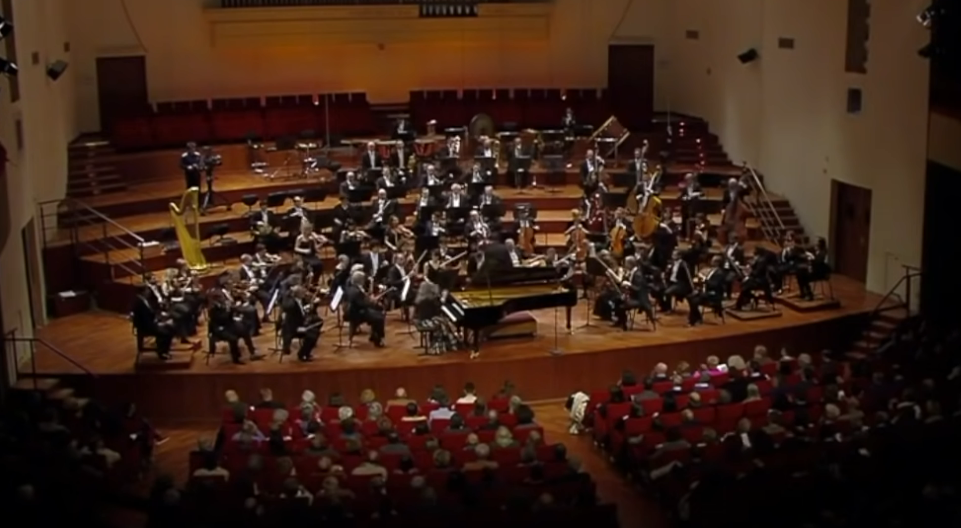8.1: Instrumental Concertos
- Page ID
- 165654
The Concerto.

Martha Argerich performs Franz Liszt's Piano Concerto No. 1. Pianist is in the center, stage-down (Screenshot from YouTube)
The term concerto (pronounced "cun-CHAIR-toe") refers to a multi-movement work performed by a soloist or small group of soloists accompanied by a larger ensemble (usually an orchestra). The earliest known concertos were written in the late 1600s (during the Baroque Period) -- and recall that the orchestra back in the Baroque Period was typically a small ensemble comprised of strings. The picture you see above is a concerto written in the 1800s, which is why it's much larger than the Baroque orchestra.
There are primarily two types of concertos: the solo concerto and the concerto grosso. While the solo concerto is comprised of a single performer acting as the soloist, the concerto grosso is comprised of multiple soloists, each interacting with one another, accompanied by the larger ensemble. The concerto grosso fell out of popularity in the Classical Era and the 19th Century era, but enjoyed somewhat of a revival in the 20th and 21st centuries.
Concertos are traditionally comprised of 3 movements, the outer movements of which are fast, and the middle of which is slow. In this regard, it resembles the instrumental sonata of the Classical Era, which often comprises the same 3-movement "fast-slow-fast" structure. As you would expect, we see different types of concertos in the Baroque Period compared to the Classical Era, in terms of instrumentation and the overall form of each movement. Concertos in the 19th century (and the "Romantic" style within the 19th century) as well as the 20th century mostly built upon the foundation of the Classical Era. In this chapter, we'll look at four different concertos: 2 from the Baroque and 1 from the Classical Era.
For those interested in downloading a PDF handout of this unit's PowerPoint slides, click here.

